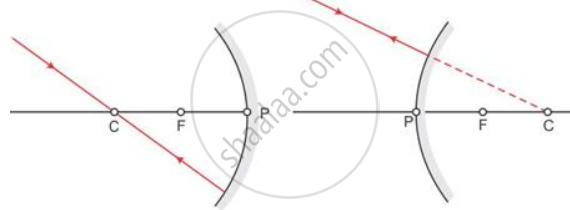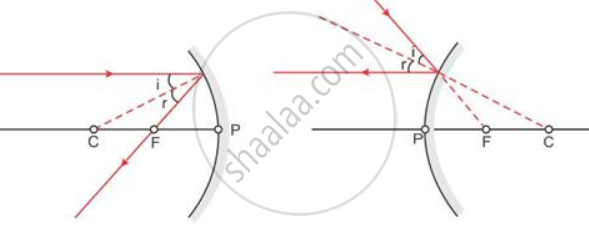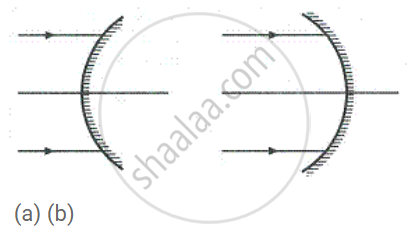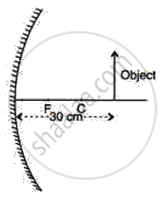Advertisements
Advertisements
Question
Which are the two convenient rays that are chosen to construct the image by a spherical mirror for a given object? Explain with the help of suitable ray diagrams.
Solution
Two convenient rays that are chosen to construct the image by a spherical mirror for a given object :
- A ray passing through the centre of curvature: A ray of light passing through the centre of curvature of a concave mirror or a ray directed in the direction of the centre of curvature of a convex mirror is reflected back along the same path after reflection.

- A ray parallel to the principal axis: A ray of light parallel the principal axis, after reflection pass through the principal focus in case of a concave mirror or appears to diverge from it in case of a convex mirror.

APPEARS IN
RELATED QUESTIONS
Define the following term in the context of spherical mirrors:- Principal axis
State the direction of incident ray which after reflection from a spherical mirror gets reflected along its own path. Give a reason.
A student obtained on a screen the sharp image of a candle flame placed at the farther end of laboratory table using a concave mirror. For getting better value of focal length of the mirror, the teacher suggested to him to focus the sun. What should the student do?
(A) Should move the mirror away from the screen.
(B) Should move the mirror towards the screen.
(C) Should move the mirror and screen both towards the sun.
(D) Should move only the screen towards the sun.
In each case (a) and (b), draw reflected rays for the given incident rays and mark focus by the symbol F.

An object of length 4 cm is placed in front of a concave mirror at distance 30 cm. The focal length of mirror is 15 cm.
- Where will the image form?
- What will be the length of image?
Choose the correct alternative and rewrite the following:
Mirror used by a dental surgeon is ..........................
Define the term Pole.
A concave mirror can be used to produce a parallel beam of light. Draw a ray to illustrate this.
An object is placed in front of a concave mirror as shown in the following figure. By scale drawing, find the nature of the image. Given f = 10 cm, v = 30 cm.

What is the difference between virtual images of an object formed by a concave mirror and a convex mirror?
